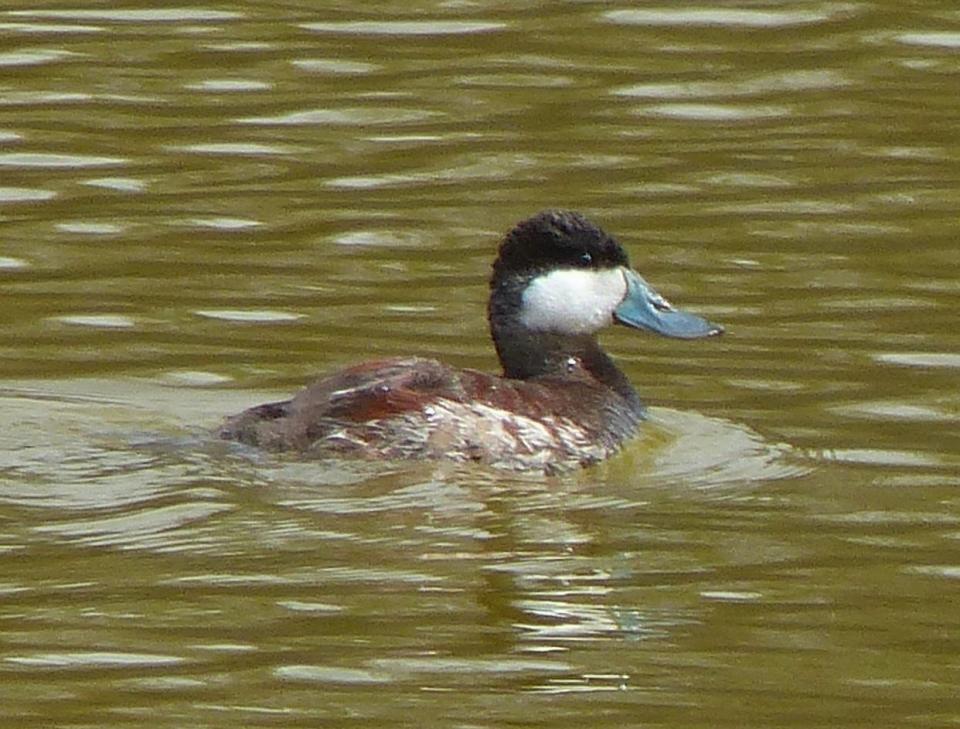Scott: Migrating birds benefit from early Rio release
A welcome highlight of the spring thus far has been the unusually early release of water from Elephant Butte reservoir into the Rio Grande, at least two months ahead of recent years. As part of the elaborate agreement between New Mexico, Texas, and Mexico, water for southern New Mexico irrigators likely won’t be available anytime soon, but the water flow in the river is already benefiting migratory birds, other wildlife, and the many native plants along the river corridor in myriad ways.
As a typically glass-half-full optimist, I’ve been challenged this spring not to despair too prematurely about the seeming lateness of hummingbirds arriving and their disturbingly small numbers, but in the Rio’s early rebirth and revitalization of all it touches I’ve (mostly) been able to find an uplifting and ongoing counterweight. Seeing good numbers of migrating waterfowl and swallows, after a dearth of such sightings over the past decade or more of the river going dry over the winter and staying that way until late May or June, is a splendid balm for the soul!
Evident almost immediately after the water release were the numerous ducks and occasional cormorants, sometimes swimming and foraging on the water and other times resting on islands or sand bars. Both double-crested cormorants and their southern cousins, neotropic cormorants, are largely fish-eaters, so mostly frequent waters deep enough to harbor their preferred prey. I was delighted that the Rio was back in the fish business for them.
Of the ducks, mallards predominated and were sometimes in groups of a hundred or more. Other migrating duck species that gathered here and there along the river the first few weeks after the water release were gadwall, northern shoveler, American wigeon, green-winged teal, and ruddy duck. I don’t often see ruddies along our stretch of river, so watching a couple of them dive and bathe was a treat. I especially enjoyed seeing groups pf birds lifting off and landing again far upstream, knowing that this spring they would have a ribbon of habitat all the way northward.
Not surprisingly, great blue herons and great egrets also resumed frequenting the riverbanks, particularly on the islands in the river. The herons are mostly year-round residents, shifting their habits according to available foraging opportunities, but the egrets are likely headed to marshy habitats for breeding. In recent years when the river has been dry in the spring, these waders are usually only seen in flight, going from one wetland to another, so again, it’s gratifying that this spring they have had more choices.

Also quick to benefit from the early river release were the migrating swallows – first violet-green and northern rough-winged swallows by the dozens, and in subsequent days and weeks tree, cliff, cave, and bank swallows. Sometimes in mixed flocks of a hundred or more, they swooped low over the river and floodplain, snapping up insects and occasionally skimming the water for a drink.
Many of those preyed-upon insects were themselves beneficiaries of the river water, whether hatched from wet soil or the newly green vegetation. As the water table moistens the surrounding floodplain and nourishes more plant growth, the various insects associated with those plants will hatch, develop, and feed countless other migrating birds, including flycatchers, sparrows, and warblers, along with butterflies, bees, and other pollinators.
Away from the currently bubbly river, drought conditions persist and will likely do so for much of the foreseeable future, but for now, I’m taking great comfort in knowing that for migrating birds, the Rio this spring is functioning as a verdant and important lifeline on their journey.
Marcy Scott is a local birder, botanizer, and author of "Hummingbird Plants of the Southwest." Along with her husband, Jimmy Zabriskie, she operates Robledo Vista Nursery in the North Valley, www.robledovista.com, specializing in native and adapted plants for birds and wildlife habitat. She can be reached at HummingbirdPlantsSW@gmail.com.
This article originally appeared on Las Cruces Sun-News: Scott: Migrating birds benefit from early Rio release

